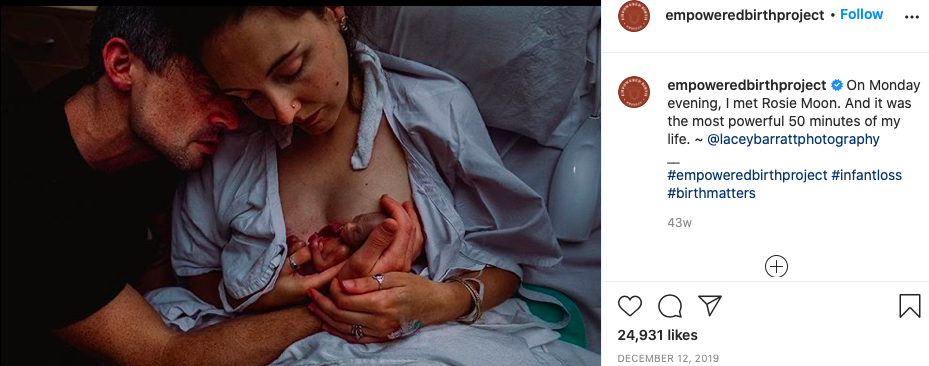Birth and postpartum photography is NOT beautiful. It’s graphic, messy, terrifying, even nauseating. But it is so profoundly necessary.
Photography projects and exhibitions such as the Empowered Birth Project and the Life After Birth Project are compiled by mothers and display childbirth in a realistic and vulnerable form. Their goal is to “celebrate, educate, and inform women about – and help heal from – the process” of birth and its aftermath. For moms, these images and artworks invoke a sense of pride and achievement, while emphasizing the “ugly truth” of childbirth without sugar coating it. When putting the most vulnerable and emotional images of their lives on display, these moms don’t care about being “picture-perfect” for everyone else.
But problems arise for these projects through society and social media. These projects face backlash due to their graphic nature. The truth is, people don’t like to view the female body and genitals in a nonsexual context. They’re only welcome when bodies are clean, hairless, and arousing. The only acceptable female body in art and photography seems to be the desirable one. Generally, it is a taboo to display the gross and sobering reality of childbirth and postpartum. It’s just not normal to show the public their ugly side. In addition, social media tends to automatically censor and block these kinds of images and videos by flagging them as pornography or “obsene” material. Some people report these images because they’re disgusted by it and just don’t want to see it on social media ever. Others complain that it could be traumatizing to their children, and just unwanted.
Unfortunately, the effects of this censorship and public opinion are harmful for everyone. It sends a message to those going through the birth process that it should be perfect and pretty, or else it’s something to be ashamed of and shouldn’t be shared. It also gives people unrealistic expectations, such as mothers need to “bounce back” right after giving birth, and it doesn’t teach people what it’s supposed to look or feel like. These restrictions result in dangerous consequences in terms of the mental and physical health of all women.
It is so important to normalize childbirth photography and artwork because many people, surprisingly even mothers, have no idea what birth looks like at all. The public needs to build a basic understanding of what these women go through — that it’s graphic, disturbing, sometimes devastating. Future mothers and their spouses could truly benefit from having realistic expectations so they’re not even more shocked and disturbed by childbirth as it is. Stress and fear actually negatively impact the birth process by inhibiting labor and causing unnecessary pain. This can lead to a longer, more painful, and more complicated birth. Also, these projects that are on social media and exhibitions create awareness of complications and educates people on what can go wrong with a pregnancy and birth. Educational artwork on postpartum hemorrhage, and even stillbirth, are incredibly impactful, and create a sense of community and bonding for those involved. These projects promote healthy conversations and interventions for those involved, and help to slowly erase stigmas connected to childbirth and motherhood. People who live their lives without ever seeing these projects become ignorant, and often lack the empathy to provide the appropriate support for those undergoing the childbirth process, which is why these projects must be left uncensored and even promoted.









